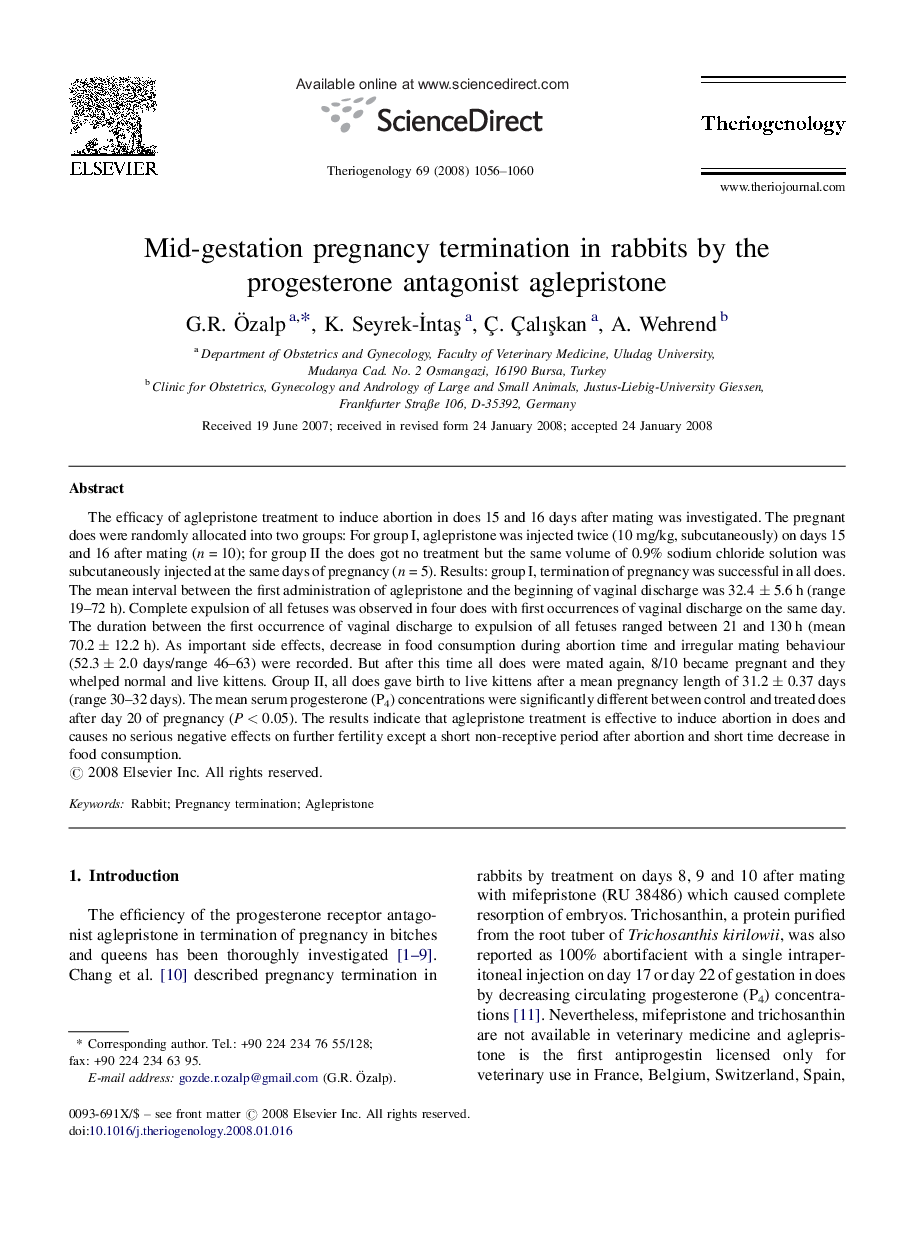| کد مقاله | کد نشریه | سال انتشار | مقاله انگلیسی | نسخه تمام متن |
|---|---|---|---|---|
| 2097044 | 1082193 | 2008 | 5 صفحه PDF | دانلود رایگان |

The efficacy of aglepristone treatment to induce abortion in does 15 and 16 days after mating was investigated. The pregnant does were randomly allocated into two groups: For group I, aglepristone was injected twice (10 mg/kg, subcutaneously) on days 15 and 16 after mating (n = 10); for group II the does got no treatment but the same volume of 0.9% sodium chloride solution was subcutaneously injected at the same days of pregnancy (n = 5). Results: group I, termination of pregnancy was successful in all does. The mean interval between the first administration of aglepristone and the beginning of vaginal discharge was 32.4 ± 5.6 h (range 19–72 h). Complete expulsion of all fetuses was observed in four does with first occurrences of vaginal discharge on the same day. The duration between the first occurrence of vaginal discharge to expulsion of all fetuses ranged between 21 and 130 h (mean 70.2 ± 12.2 h). As important side effects, decrease in food consumption during abortion time and irregular mating behaviour (52.3 ± 2.0 days/range 46–63) were recorded. But after this time all does were mated again, 8/10 became pregnant and they whelped normal and live kittens. Group II, all does gave birth to live kittens after a mean pregnancy length of 31.2 ± 0.37 days (range 30–32 days). The mean serum progesterone (P4) concentrations were significantly different between control and treated does after day 20 of pregnancy (P < 0.05). The results indicate that aglepristone treatment is effective to induce abortion in does and causes no serious negative effects on further fertility except a short non-receptive period after abortion and short time decrease in food consumption.
Journal: Theriogenology - Volume 69, Issue 9, June 2008, Pages 1056–1060